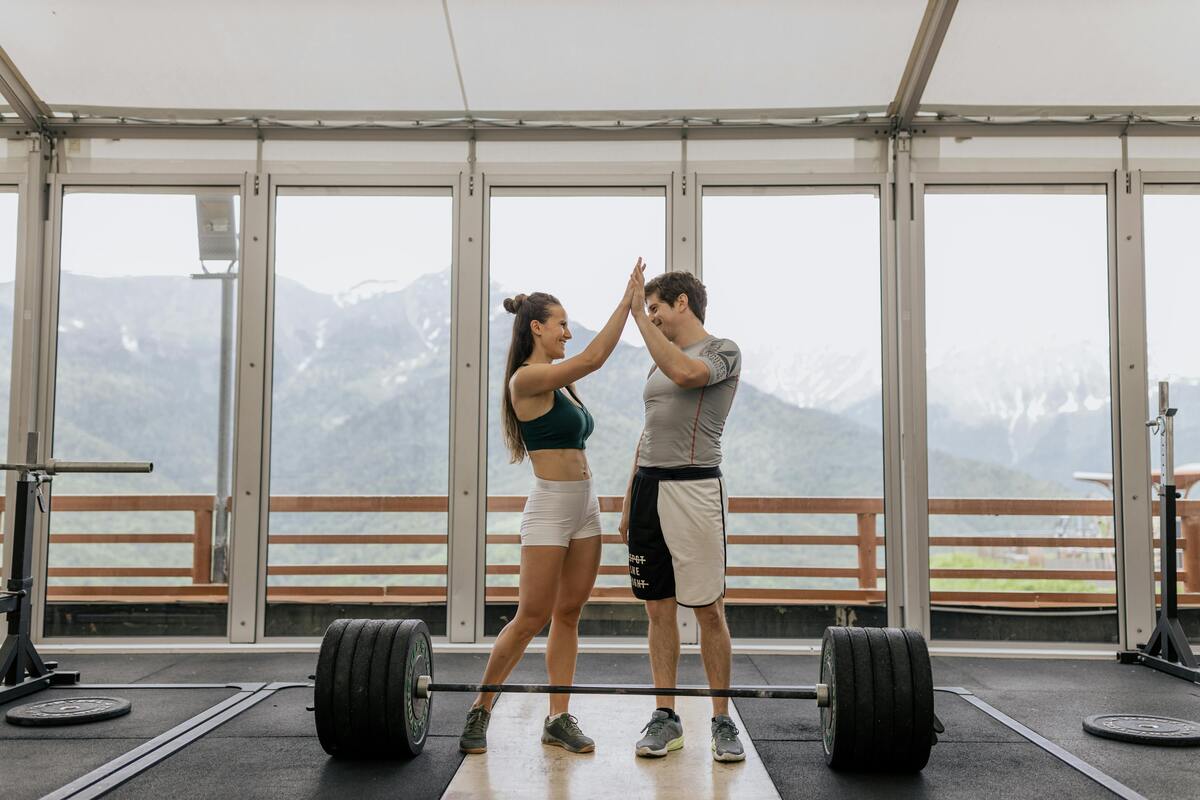In the fitness industry, you need an attention-grabbing personal trainer CV that looks good and stands out.
This guide covers dos and don’ts for your CV and how to approach each section. Plus, at the end you’ll find a brief personal trainer CV example to see how we put the theory into practice!
We’ll also keep in mind that you may not only want to apply for pure personal trainer job opportunities. With your background in fitness, nutrition and teaching there are plenty of different potential career opportunities you might be pursuing.
Perhaps you want to teach workout classes rather than coach individuals. Maybe you want to become a sports nutritionist, yoga teacher, gym manager, or even a sports massage therapist – with an average annual salary of up to £54k, says Glassdoor.
No matter which precise opportunity you’re exploring, it all starts with a well-written CV that does a great job of outlining why you’re a great fit for the role.
Personal trainer CV – dos and don’ts
When writing a CV for a fitness-related role, or any job in fact, keep the reader in mind.
Do:
- Strike an informative, professional tone.
- Keep the layout and format simple and effective, so the document is straightforward to read and the key information is very easy to find.
- Tailor your CV to the job description if responding to different adverts
- Check your CV thoroughly before sending it
Don’t:
- Make any mistakes that make your CV look unprofessional
- Lie on a CV because it won’t help you in the long run
- Add personal details such as your age, nationality or marital status in the contact information section
After the contact information section, begin your CV with a bang – put a lot of thought into your personal statement.
Start strong with a compelling personal statement and skillset
Whoever is considering your application could be reading through tens of different CVs that day. Spoiler alert – they don’t read every word on each CV they receive.
Sometimes they’ll stop reading after the personal statement if there aren’t enough highlights to pique their interest.
They’ll assume candidates have put their standout credentials at the top of their CV so if unconvinced after reading this section, they won’t take the time to go any further.So here’s how to really sell yourself in a personal statement.
Consider leaving this part until last, once you’ve worked out your best strengths throughout the rest of the CV.
Similarly, highlight your best and most relevant hard or soft skills quickly on any personal trainer CV. For example:
- Exercise physiology
- Nutrition coaching
- Customer service
- Open communication
- Fluent in Spanish
You don’t necessarily need a dedicated section with skills for your CV – if you prefer, put any outstanding ones in your personal statement or high up in the next section…
Employment – responsibilities and achievements
Here we’re talking about the bulk of your CV – also called Work History, Career Experience or something equivalent.
If you’ve had different roles or jobs, give each one its own subsection and the dates, usually in reverse-chronological order.
Also include other relevant details such as job titles or company names if applicable – If you haven’t had a job yet but have done some work experience, write about that instead.
If the reverse-chronological format doesn’t work well for your experiences so far there are other different types of CV to consider using.
Whichever way you handle it, the priority is to convey your most impressive a) responsibilities and b) achievements. We show how this can work in a personal trainer CV example near the end of this article.
In short, try not to write just about what you have done, but why it mattered. If there are any facts, figures or statistics you can use to back up your points, add them in!
Qualifications and education
The further you progress in your career, the less emphasis you’ll put on the education part of this section. You’re more likely to list qualifications first, grades second later on as your role progresses.
Include any key CIMSPA accreditations or similar certifications you have such as a Level 3 Personal qualification, Level 2 Gym Instructor standard etc. Alternatively you could include your qualifications as hard skills, as we’ve done in the personal trainer CV example below.
And then here’s how to include your degree, A-Levels and GCSEs in the CV education section.
You never know when having additional languages could appeal too. Here’s our guide on CV languages.
Interests and references
Any interests you include should ideally strengthen your application in a relevant way, if possible. If you’re short of space on your CV, this section isn’t essential.
Typically on a CV there’s no need to include referee details or the reference itself. Just write something along the lines of References available upon request for now.
Taking all of the above into account, here’s how your personal trainer CV might look in practice:
Personal trainer CV example
[Name] – [Address] – [Phone number] – [Email address]
Personal Statement
Dedicated and results-oriented PT with a 90% client retention rate and a passion for helping people achieve challenging long-term fitness goals. Proven ability to create personalised workout plans and motivate clients, with an average 5-star rating on relevant apps.
Key Skills and Qualifications
- PT Academy OFQUAL Level 3 Personal Training qualification
- OriGym CIMSPA Level 4 Nutrition qualification
- Active IQ CIMSPA Level 2 Gym Instructor
- Strength training specialist
- Cardiovascular training expert
- Injury prevention specialist
Work History
[Role, employer] [Dates]
Achievements:
- Maintained a client retention rate of 90% through highly personalised personal training, flexible approaches and strong motivational skills
- Received 25 client reviews, all with 5 star ratings, plus positive testimonials from clients in the last 6 months alone
- Increased income from PT activities by 15% during the last 12 months through proactive business development
Responsibilities:
- Conducted comprehensive fitness assessments to identify client needs and goals
- Developed and implemented personalised workout plans tailored to individual fitness levels and objectives
- Delivered one-to-one and group training sessions, demonstrating correct exercise technique and form
- Motivated and encouraged clients to achieve their fitness goals through positive reinforcement and accountability
- Monitored client progress, made necessary adjustments to workout plans, and celebrated achievements
- Provided nutritional guidance and advice to support overall health and wellness.
- Maintained a clean and safe training environment
Education
- [University name, degree subject, grade] [Dates]
- [School name, A-Levels, grades] [Dates]
- [School name, GCSEs, grades] [Dates]
Interests
- High familiarity with fitness software and tracking apps
- Strong social media presence and natural ability to engage with clients online
- Passionate about staying up-to-date with the latest fitness trends and research
References available upon request
Final thoughts: Writing a strong personal trainer CV
We can’t stress enough how important it is to check CVs thoroughly for any typos, inconsistencies or other errors.
So many potential employers and clients value attention to detail in anyone they choose to work with. Use built-in spelling and grammar checkers on your Google or Word Doc and ideally, ask a friend or family member to review your CV too.
We hope this guide has helped you think about the different ways to put your personal trainer CV together. For other useful advice, including preparing for interviews, take a look at the PurpleCV blog.
Recent articles include our answer to a common question around driving licence on CV guidelines.
If you need help writing a CV that does justice to all that hard work you’ve put into personal training so far, we can help. We are CV writing specialists with a strong set of reviews ourselves so please don’t hesitate to get in touch if you’re interested in our services.


